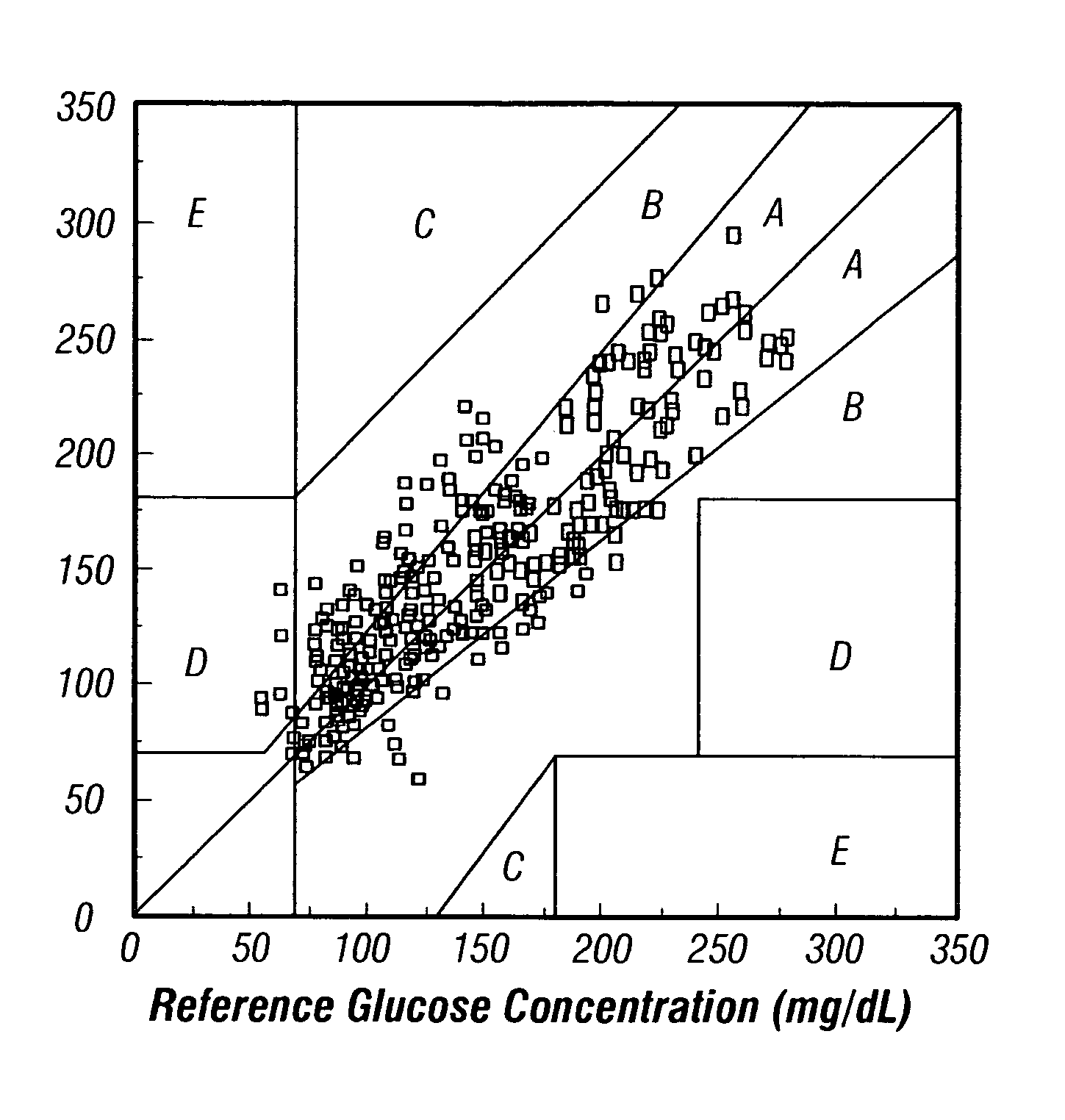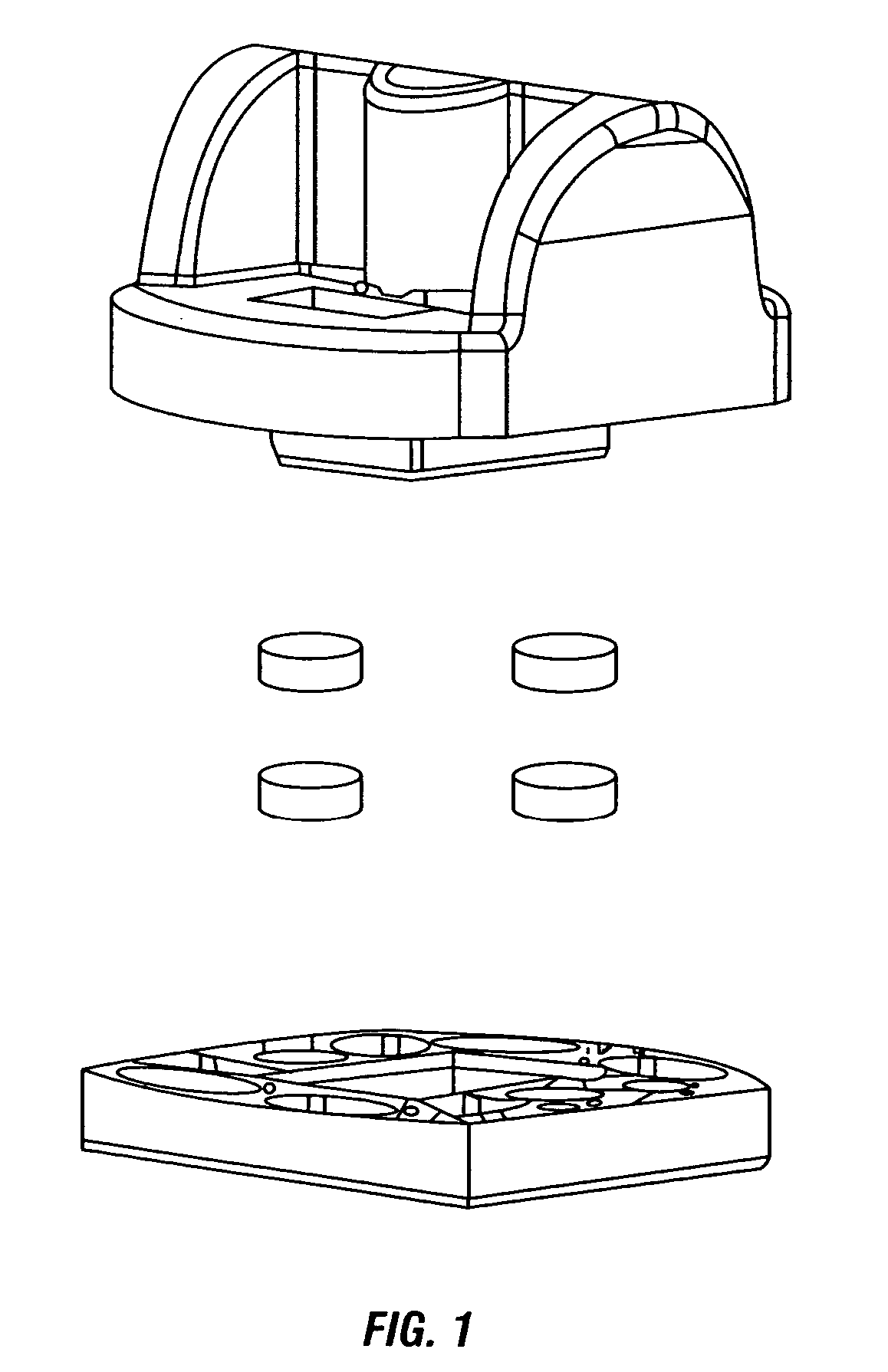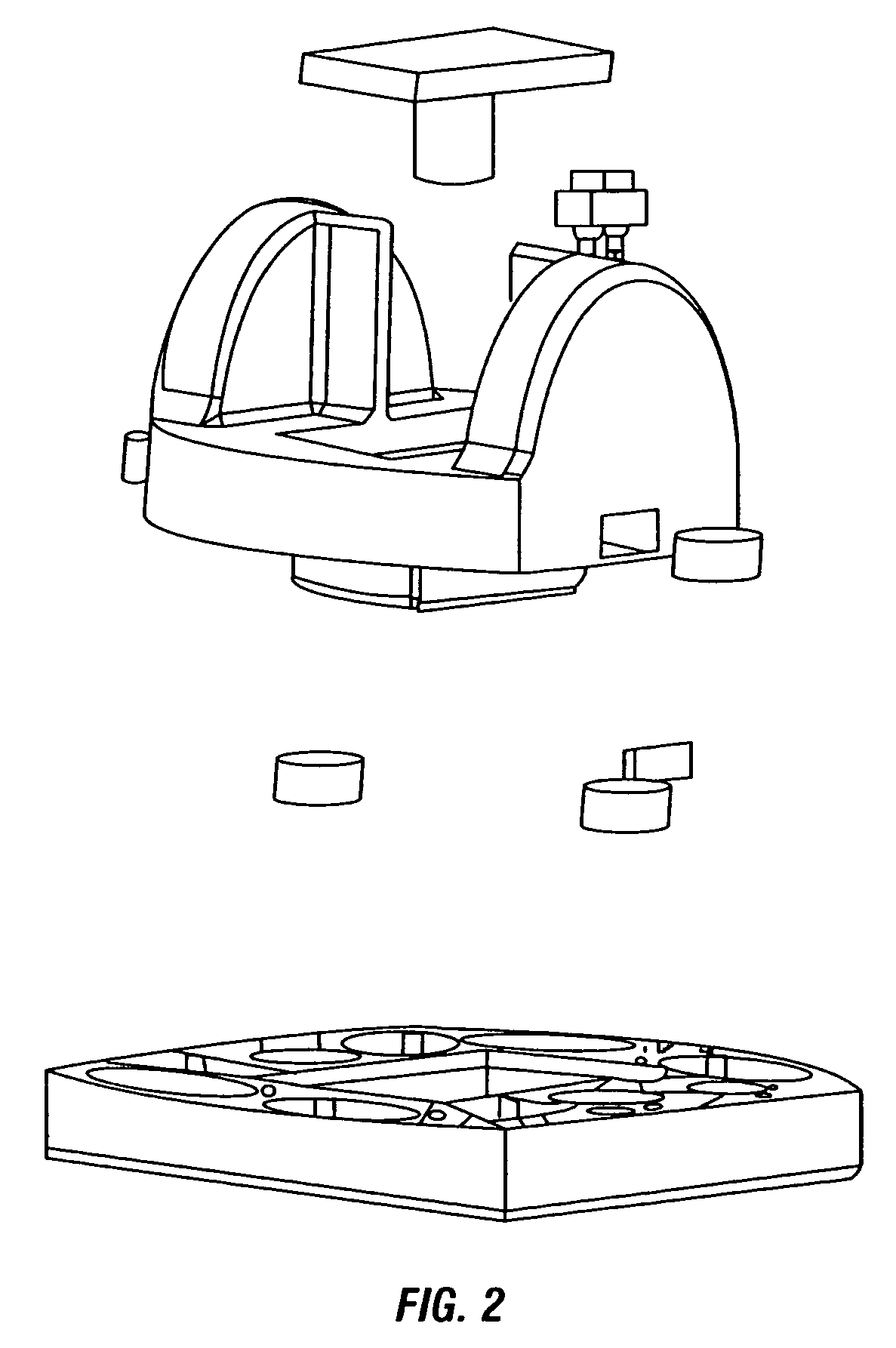Method of sample control and calibration adjustment for use with a noninvasive analyzer
a non-invasive, calibration adjustment technology, applied in the field of methods, can solve the problems of increasing the difficulty of monitoring, reducing the accuracy of sample probe placement, and reducing the ability to maintain calibration performan
- Summary
- Abstract
- Description
- Claims
- Application Information
AI Technical Summary
Benefits of technology
Problems solved by technology
Method used
Image
Examples
example
[0104]An example data set of noninvasive glucose concentration prediction is presented in FIG. 6. These representative data are processed using the preferred model correction technique described above that uses only a direct glucose reference concentration and does not use a noninvasive (or related) reference spectrum. The instrumentation used to collect the calibration data includes three identically configured near-IR based analyzers configured with a tungsten halogen source, excitation guiding optics, a bandpass filter, collection guiding optics, a slit, a grating, an array detector, and associated electronics. A guide is placed onto each subject at the beginning of a given day for all measurements taken in the calibration and subsequent prediction measurements. All subjects underwent one or more glucose profiles over a period of at least one day. The calibration is built with a total of eight subjects, using the calibration instruments to collect 241 samples over a period of two...
PUM
 Login to View More
Login to View More Abstract
Description
Claims
Application Information
 Login to View More
Login to View More - R&D
- Intellectual Property
- Life Sciences
- Materials
- Tech Scout
- Unparalleled Data Quality
- Higher Quality Content
- 60% Fewer Hallucinations
Browse by: Latest US Patents, China's latest patents, Technical Efficacy Thesaurus, Application Domain, Technology Topic, Popular Technical Reports.
© 2025 PatSnap. All rights reserved.Legal|Privacy policy|Modern Slavery Act Transparency Statement|Sitemap|About US| Contact US: help@patsnap.com



